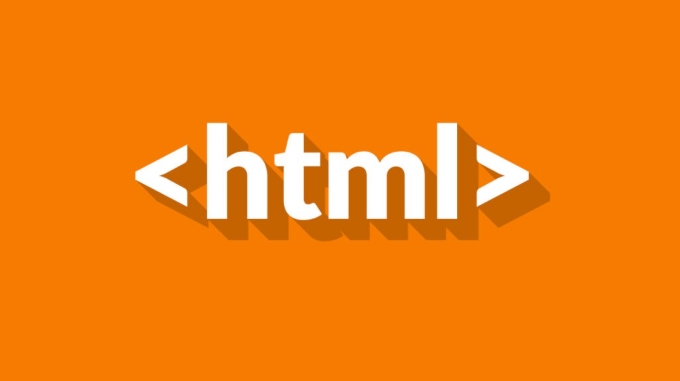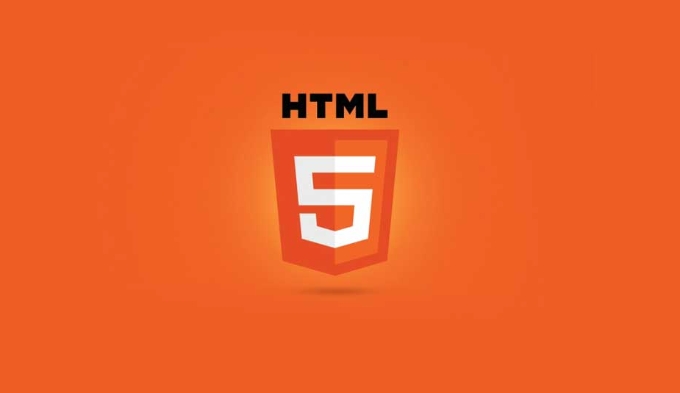 Web Front-end
Web Front-end
 HTML Tutorial
HTML Tutorial
 What is the purpose of the name and value html attributes in a form?
What is the purpose of the name and value html attributes in a form?
What is the purpose of the name and value html attributes in a form?
Jun 29, 2025 am 01:59 AMIn HTML forms, the name attribute provides the key in key-value pairs sent to the server, while the value attribute provides the actual data. 1) The name attribute identifies the form field, and without it, input isn't included in submissions. 2) It also groups related elements like radio buttons. 3) The value attribute represents the data sent, which may be user-entered or predefined. 4) For checkboxes and radio buttons, the value determines what is submitted if selected. 5) Multiple elements can share the same name, allowing submission of multiple values. 6) Hidden inputs use name and value to pass non-user data. Together, name and value ensure form data is correctly interpreted by the server.

When you're building a form in HTML, the name and value attributes play specific but complementary roles — especially when the form is submitted. Here's how they work together to help process user input.

The Role of the name Attribute
The name attribute acts like a label for the data that comes from a form field. When a form is submitted, the server receives the form data as key-value pairs. The name attribute provides the key in this pairing.

For example:
<input type="text" name="username">
If a user types "johndoe" into this field and submits the form, the data sent to the server looks something like:

username=johndoe
This helps the server understand which piece of data corresponds to which form field. Without a name attribute, the input won't be included in the form submission at all.
Also, some form elements like radio buttons rely on the name attribute to group options together:
<input type="radio" name="color" value="red"> Red <input type="radio" name="color" value="blue"> Blue
Here, both options share the same name, so only one can be selected at a time.
What the value Attribute Does
The value attribute represents the actual data that gets sent to the server once the form is submitted. It’s the value part of the key-value pair.
In many cases, the value is set by the user — like typing text into an input box. But sometimes it's predefined:
<input type="submit" value="Send My Info">
In this case, the button displays "Send My Info", and clicking it sends the form. That value doesn’t directly affect the form data, but it's what users see and interact with.
For checkboxes and radio buttons, the value becomes important because it determines what gets sent if the option is selected:
<input type="checkbox" name="interest" value="sports"> Sports <input type="checkbox" name="interest" value="music"> Music
If a user checks both boxes, the form will send:
interest=sports&interest=music
How Name and Value Work Together
These two attributes are designed to function as a team:
nametells the server what kind of data it is.valuetells the server what the actual data is.
Without both, the form wouldn't make much sense on the receiving end.
Some other points to keep in mind:
- Multiple form elements can share the same
name, especially in checkboxes or radio groups. - If you want the server to accept multiple values under the same name (like multiple checkboxes), make sure your backend expects an array or list.
- For hidden inputs, you might use
nameandvalueto pass extra data without user interaction:<input type="hidden" name="user_id" value="12345">
Final Thoughts
In short, the
nameandvalueattributes are essential for making form data usable. Thenameidentifies the field, and thevalueholds the user's input or a preset choice. They may seem basic, but they’re the backbone of how forms communicate with servers.That’s basically it — nothing flashy, but definitely important.
The above is the detailed content of What is the purpose of the name and value html attributes in a form?. For more information, please follow other related articles on the PHP Chinese website!

Hot AI Tools

Undress AI Tool
Undress images for free

Undresser.AI Undress
AI-powered app for creating realistic nude photos

AI Clothes Remover
Online AI tool for removing clothes from photos.

Clothoff.io
AI clothes remover

Video Face Swap
Swap faces in any video effortlessly with our completely free AI face swap tool!

Hot Article

Hot Tools

Notepad++7.3.1
Easy-to-use and free code editor

SublimeText3 Chinese version
Chinese version, very easy to use

Zend Studio 13.0.1
Powerful PHP integrated development environment

Dreamweaver CS6
Visual web development tools

SublimeText3 Mac version
God-level code editing software (SublimeText3)
 Implementing Clickable Buttons Using the HTML button Element
Jul 07, 2025 am 02:31 AM
Implementing Clickable Buttons Using the HTML button Element
Jul 07, 2025 am 02:31 AM
To use HTML button elements to achieve clickable buttons, you must first master its basic usage and common precautions. 1. Create buttons with tags and define behaviors through type attributes (such as button, submit, reset), which is submitted by default; 2. Add interactive functions through JavaScript, which can be written inline or bind event listeners through ID to improve maintenance; 3. Use CSS to customize styles, including background color, border, rounded corners and hover/active status effects to enhance user experience; 4. Pay attention to common problems: make sure that the disabled attribute is not enabled, JS events are correctly bound, layout occlusion, and use the help of developer tools to troubleshoot exceptions. Master this
 Configuring Document Metadata Within the HTML head Element
Jul 09, 2025 am 02:30 AM
Configuring Document Metadata Within the HTML head Element
Jul 09, 2025 am 02:30 AM
Metadata in HTMLhead is crucial for SEO, social sharing, and browser behavior. 1. Set the page title and description, use and keep it concise and unique; 2. Add OpenGraph and Twitter card information to optimize social sharing effects, pay attention to the image size and use debugging tools to test; 3. Define the character set and viewport settings to ensure multi-language support is adapted to the mobile terminal; 4. Optional tags such as author copyright, robots control and canonical prevent duplicate content should also be configured reasonably.
 Best HTML tutorial for beginners in 2025
Jul 08, 2025 am 12:25 AM
Best HTML tutorial for beginners in 2025
Jul 08, 2025 am 12:25 AM
TolearnHTMLin2025,chooseatutorialthatbalanceshands-onpracticewithmodernstandardsandintegratesCSSandJavaScriptbasics.1.Prioritizehands-onlearningwithstep-by-stepprojectslikebuildingapersonalprofileorbloglayout.2.EnsureitcoversmodernHTMLelementssuchas,
 HTML for email templates tutorial
Jul 10, 2025 pm 02:01 PM
HTML for email templates tutorial
Jul 10, 2025 pm 02:01 PM
How to make HTML mail templates with good compatibility? First, you need to build a structure with tables to avoid using div flex or grid layout; secondly, all styles must be inlined and cannot rely on external CSS; then the picture should be added with alt description and use a public URL, and the buttons should be simulated with a table or td with background color; finally, you must test and adjust the details on multiple clients.
 How to associate captions with images or media using the html figure and figcaption elements?
Jul 07, 2025 am 02:30 AM
How to associate captions with images or media using the html figure and figcaption elements?
Jul 07, 2025 am 02:30 AM
Using HTML sums allows for intuitive and semantic clarity to add caption text to images or media. 1. Used to wrap independent media content, such as pictures, videos or code blocks; 2. It is placed as its explanatory text, and can be located above or below the media; 3. They not only improve the clarity of the page structure, but also enhance accessibility and SEO effect; 4. When using it, you should pay attention to avoid abuse, and apply to content that needs to be emphasized and accompanied by description, rather than ordinary decorative pictures; 5. The alt attribute that cannot be ignored, which is different from figcaption; 6. The figcaption is flexible and can be placed at the top or bottom of the figure as needed. Using these two tags correctly helps to build semantic and easy to understand web content.
 How to handle forms submission in HTML without a server?
Jul 09, 2025 am 01:14 AM
How to handle forms submission in HTML without a server?
Jul 09, 2025 am 01:14 AM
When there is no backend server, HTML form submission can still be processed through front-end technology or third-party services. Specific methods include: 1. Use JavaScript to intercept form submissions to achieve input verification and user feedback, but the data will not be persisted; 2. Use third-party serverless form services such as Formspree to collect data and provide email notification and redirection functions; 3. Use localStorage to store temporary client data, which is suitable for saving user preferences or managing single-page application status, but is not suitable for long-term storage of sensitive information.
 What are the most commonly used global attributes in html?
Jul 10, 2025 am 10:58 AM
What are the most commonly used global attributes in html?
Jul 10, 2025 am 10:58 AM
class, id, style, data-, and title are the most commonly used global attributes in HTML. class is used to specify one or more class names to facilitate style setting and JavaScript operations; id provides unique identifiers for elements, suitable for anchor jumps and JavaScript control; style allows for inline styles to be added, suitable for temporary debugging but not recommended for large-scale use; data-properties are used to store custom data, which is convenient for front-end and back-end interaction; title is used to add mouseover prompts, but its style and behavior are limited by the browser. Reasonable selection of these attributes can improve development efficiency and user experience.
 Implementing Native Lazy Loading for Images in HTML
Jul 12, 2025 am 12:48 AM
Implementing Native Lazy Loading for Images in HTML
Jul 12, 2025 am 12:48 AM
Native lazy loading is a built-in browser function that enables lazy loading of pictures by adding loading="lazy" attribute to the tag. 1. It does not require JavaScript or third-party libraries, and is used directly in HTML; 2. It is suitable for pictures that are not displayed on the first screen below the page, picture gallery scrolling add-ons and large picture resources; 3. It is not suitable for pictures with first screen or display:none; 4. When using it, a suitable placeholder should be set to avoid layout jitter; 5. It should optimize responsive image loading in combination with srcset and sizes attributes; 6. Compatibility issues need to be considered. Some old browsers do not support it. They can be used through feature detection and combined with JavaScript solutions.





